
Laowa finally did it. It took them a LONG while, but they finally released their first autofocus lens. And it wouldn’t be Laowa if it wasn’t something extreme. Matching with their 10-year anniversary, they released another 10 – the Laowa AF 10mm f/2.8 Zero-D FF. In this review, we’ll have a look at the Nikon Z-mount version. The lens is also available in Sony E-mount, as well as Canon R and L-mount, although the latter two are only available as fully manual versions.
10mm may smell like APS-C, but it’s actually a full-format lens. Thus, we are talking about an ultra-wide prime lens here with a field-of-view of just over 130 degrees. It’s still a fully corrected (rectilinear) lens rather than a fish-eye. You still have to make sure that your feet aren’t in the picture. The pricing is fairly ambitious at $799 USD. While this may appear pricey, keep in mind that such exotic lenses just can’t be cheap.

The build quality of the Laowa AF 10mm f/2.8 Zero-D FF is excellent. The lens barrel is made of metal down to the mount. Interestingly, Laowa didn’t stick to the conventional black color scheme but chose a slightly blueish gunmetal tone. It’s pretty unique, although it doesn’t match perfectly with your camera’s black in terms of finish. Another eye-catcher is the texture with its diagonal grooves and well as a flattened part of the barrel showing the Laowa logo. It looks quite modern, for sure. The lens isn’t fully weather-sealed, but it does have a mount gasket at least. Yours truly took it on a hiking trip (see sample images), and it worked just fine in freezing temperatures. It has a tiny lens hood. While it can be detached, it’s barely deeper than the front lens cap, so it’s not really necessary to do so (see the product images above). Unlike some ultra-wide lenses, you can use conventional 77mm filters on this lens.
The AF is pretty fast and silent. Manual focusing works by wire. While the lens provides AF, a camera-controlled aperture and EXIF data.
| Specifications | |
|---|---|
| Optical construction | 15 elements in 9 groups (2x aspherical, 3x ED) |
| Number of aperture blades | 5 (edgy) or 14 (optional) |
| min. focus distance | 0.12m ( max. magnification 1:4.16 ) |
| Dimensions | Ø82 x 70.8mm |
| Weight | 420g |
| Filter size | Ø77mm |
| Hood | petal-shaped, bayonet mount, supplied |
| Other features | mount gasket |
Distortion
Let’s start with RAW image distortions first. Laowa calls this a “Zero-D” (Zero Distortion) lens. That’s a bit optimistic. However, for its class, the RAW distortion of just over 2% is certainly FAR lower than what we’ve seen from other lenses.
Auto-correction doesn’t fully correct the issue, but it’s “good enough” in our book. Please note that full distortion correction is lossy, so a low original distortion combined with moderate correction is a good thing.
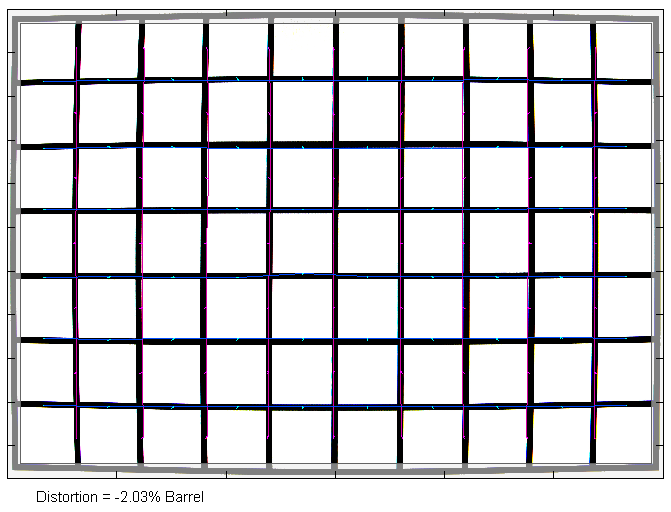
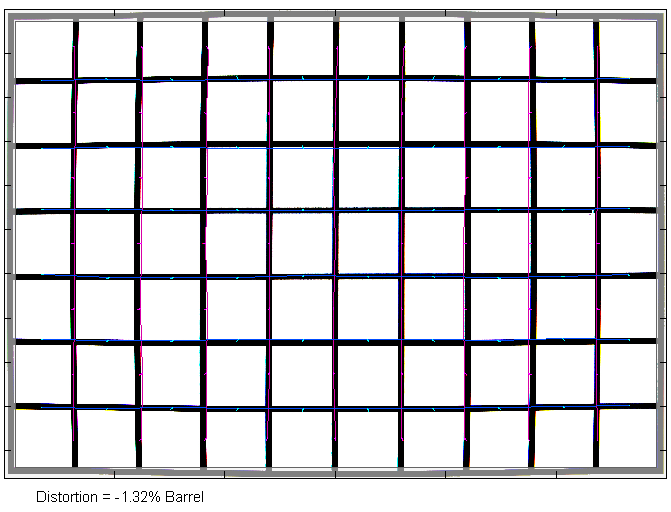
Vignetting
The light falloff is, unsurprisingly, extremely high. This is in part due to “natural” vignetting that is unavoidable.
The raw vignetting reaches a whopping 5 EV (f-stops) in the corners, and stopping down only results in a rather moderate improvement. Thus, it’s best to rely on image auto-correction here, which reduces the light falloff to a more manageable 3 EV (f-stops). This is still far from being low, and additional manual correction may sometimes be needed.

MTF (resolution)
The resolution characteristic is a bit of a mixed bag – as you would expect from such an extreme lens. The center performance is perfectly fine at 10mm and f/2.8, but there’s a sharp drop towards the borders and, more so, the corners, which are pretty soft here – also because of some field curvature.
However, stopping down to f/4 substantially boosts the outer image field’s quality, and the peak results are achieved at f/5.6. The center is tack-sharp, followed by a very good zone mid-field. The outer image field reaches good results here. Diffraction already has a higher impact from f/11, so it’s best to stay at f/8 or lower if possible.
Please note that the MTF results are not directly comparable across the different systems!
Below is a simplified summary of the formal findings. The chart shows line widths per picture height (LW/PH), which can be taken as a measure of sharpness. If you want to know more about the MTF50 figures, you may check out the corresponding Imatest Explanations.

Chromatic Aberrations (CAs)
Lateral chromatic aberrations (color shadows at hard contrast transitions) are fairly low, with an average pixel width of less than ~1px at the image borders. They are lowest at f/2.8 and increase a bit when stopping down.
They are (as always) somewhat more pronounced in the far corners.

Bokeh
A 10mm can’t be a bokeh wonder due to its depth-of-field. Thus, if you want to achieve some bokeh effect, you have to go close, really close. We can’t perform our usual bokeh tests with such a lens, but the example below may give you an idea. The blur smoothness is quite good for such a lens, although expect some smearing near the corners.

Flare
Laowa has an old enemy – strong light sources that produce flare effects. And yes, the 10mm f/2.8 isn’t perfect here either. However, we see some progress compared to earlier Laowa lenses.
Strong light sources produce artifacts in extreme situations. Two examples are below.

Here’s a crop from one of the sample images illustrating some ghostings:
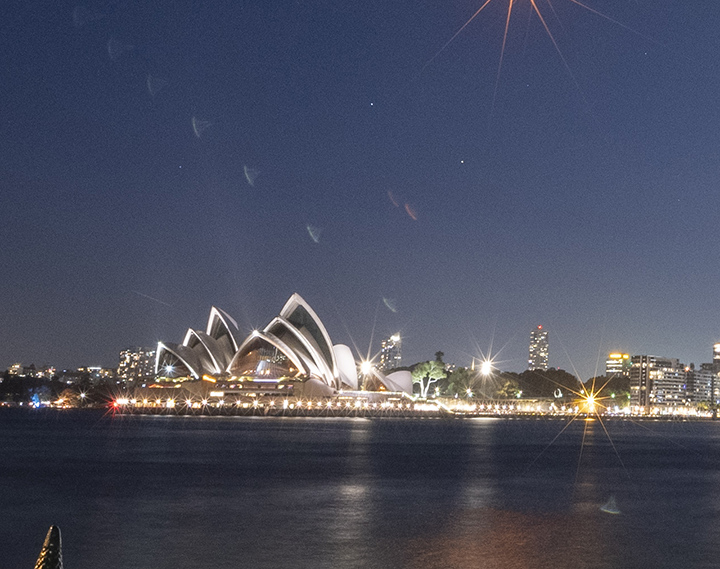
Sun Stars
The Laowa lens comes in two different “aperture” flavors – with 5 (edgy) or no less than 14 blades. The latter is optimized for a smoother bokeh, but, as mentioned, keep in mind that a smooth bokeh is something very relative in this lens class. Additionally – if you want a nice bokeh, you will shoot wide-open anyway.
Thus, we’d recommend the 5-blade version. While an edgy aperture shape is frowned upon with longer lenses, it comes to its own when rendering sun stars from light sources. As you can see below, they emerge very “early” at f/4 and have nicely “pointy” rays.
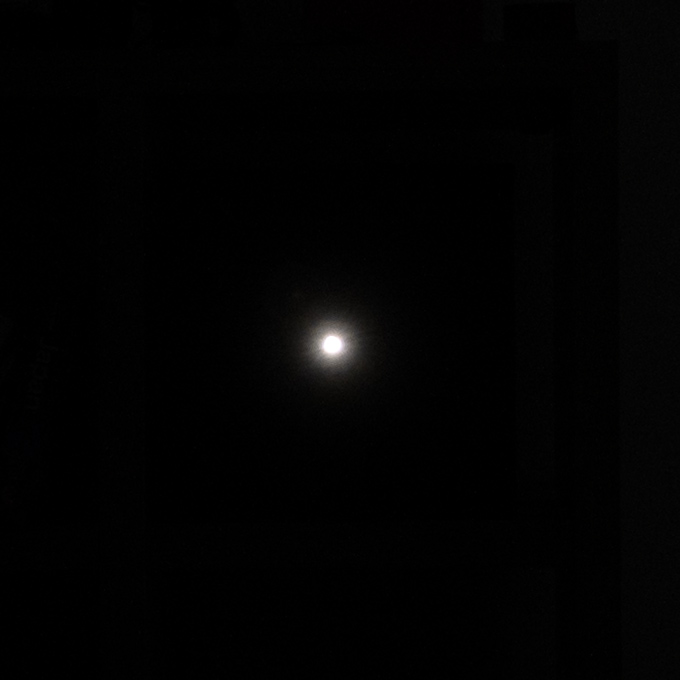
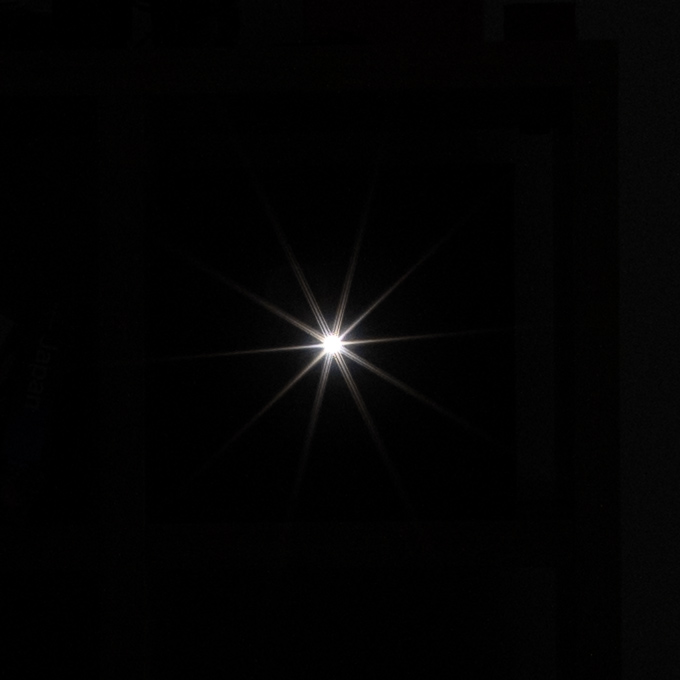
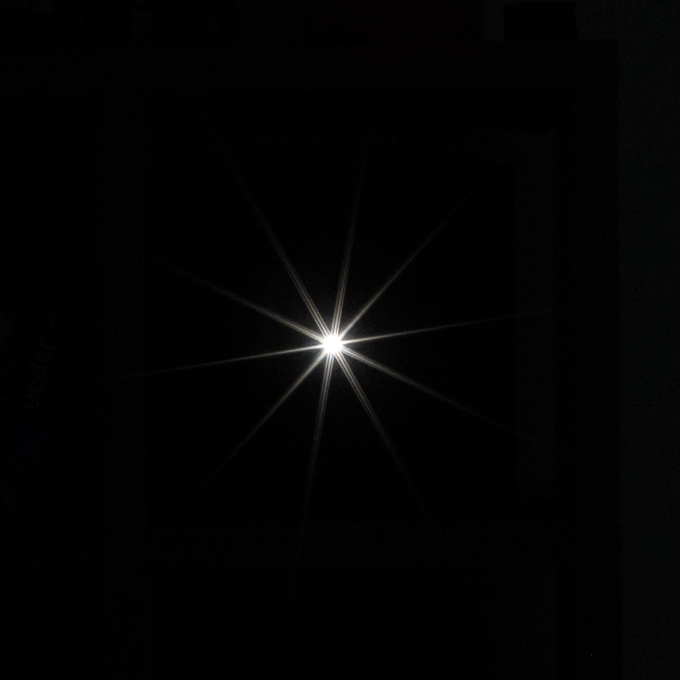
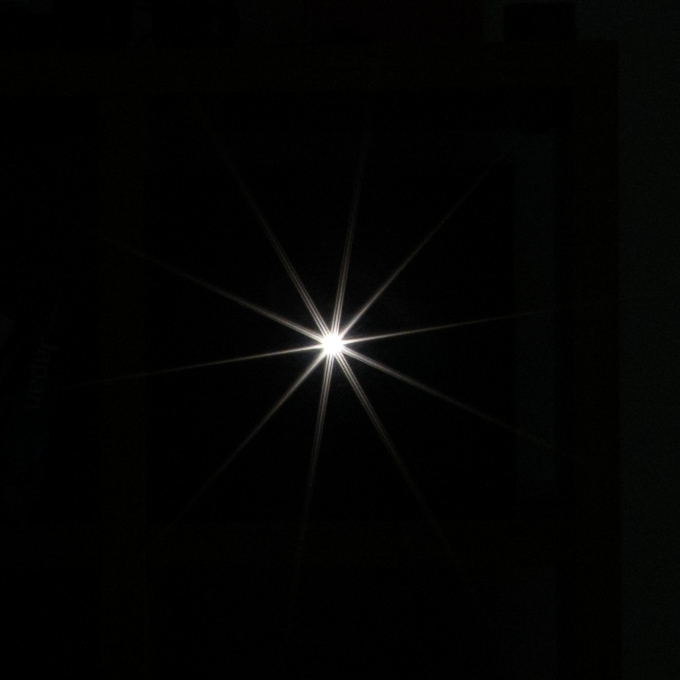
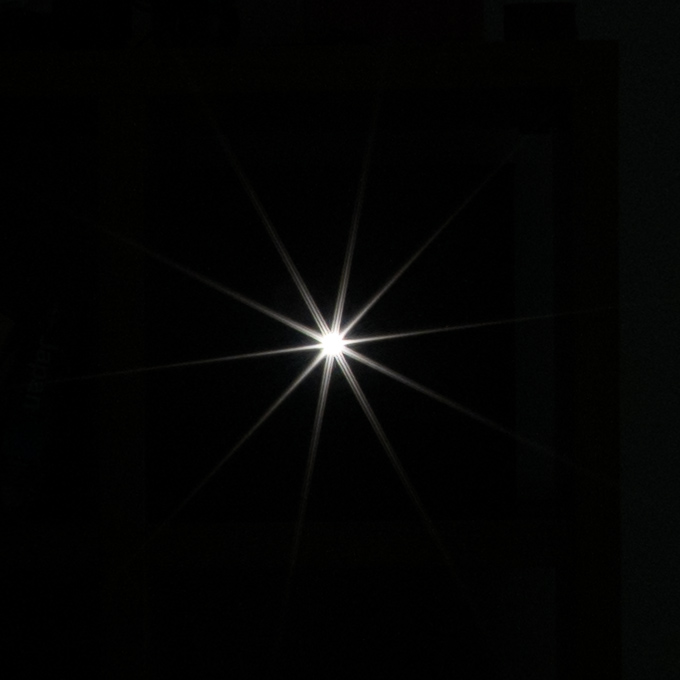

Here’s a crop from a real-life image – pretty good actually:
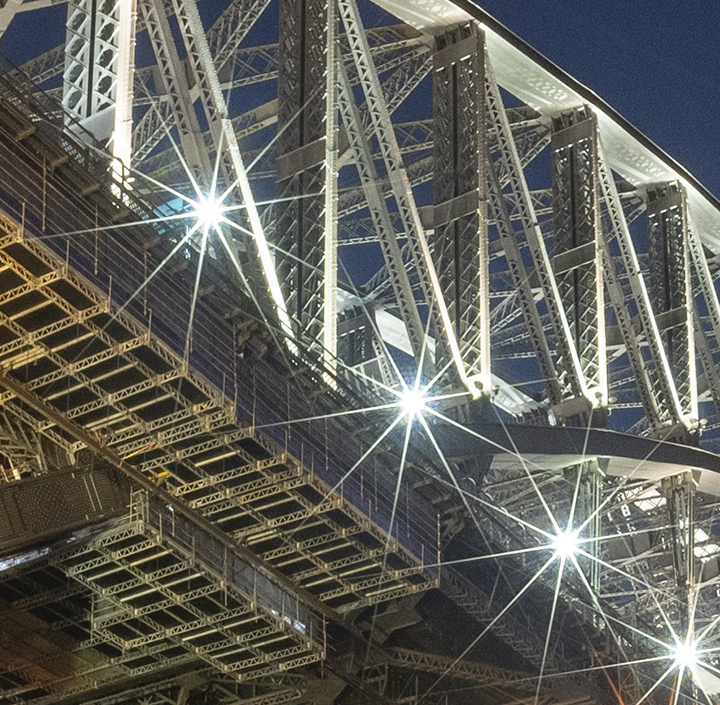
Sample Images
Let's face it - a 10mm f/2.8 lens is about as extreme as it gets in terms of (wide) focal length, and it would be naive to expect truly outstanding results. Extreme wide angles ALWAYS suffer some loss of resolution towards the corners - and that's no different with the Loawa AF 10mm f/2.8 Zero-D. This is most obvious at f/2.8. The image center is sharp here, but the drop in quality towards the borders/corners is quite dramatic - also because of some field curvature. f/4 is much better already, and the results are pretty good at medium aperture settings. Lateral CAs are generally low. Image distortions are very low for such a lens - even in RAW images. Auto-correction is mildly mitigating this. It is more needed for vignetting which is, unsurprisingly, rather extreme. Even with auto-correction is remains very high. The resistance against flare has been improved compared to earlier Laowa lenses. It's still not as good as with the OEM players, but it's mostly acceptable now.
In terms of mechanical quality, the Laowa AF 10mm f/2.8 Zero-D FF is a convincing package. Traditionally, their lenses relied on a metal body, and they continue to do so here. At just 420g, it's still not a brick. Instead of using traditional styling, they went for a fresh look this time both regarding the texture of the focus ring as well the gunmetal color scheme. It's quite attractive, actually. The focus ring operates smoothly and is still a bit dampened. Maybe the most exciting news about the lens is the new AF motor - a first for Laowa. While a 10mm lens doesn't REALLY require an autofocus, it's nice to experience the quick and noiseless action. Let's hope that they will update some of their other lenses soon because AF is pretty much a requirement for a brand that wants to move into the mainstream.
Keep in mind that lenses this wide are extremely difficult to manufacture. So if you give it a shot, do some post-purchase check for optical alignment.
The Laowa AF 10mm f/2.8 Zero-D FF has a price tag of $799. That's far from being cheap in absolute terms, but it's still reasonable for such an exotic focal length. The closest competitor may be the Voigtlander 10mm f/5.6 Aspherical, which sells for $750 - without AF, and it's 2 f-stops slower. Overall, Laowa did a good job providing decent quality despite the extreme specifications. And welcome to the AF club.
-
Optical Quality
-
Build Quality
-
Price / Performance

